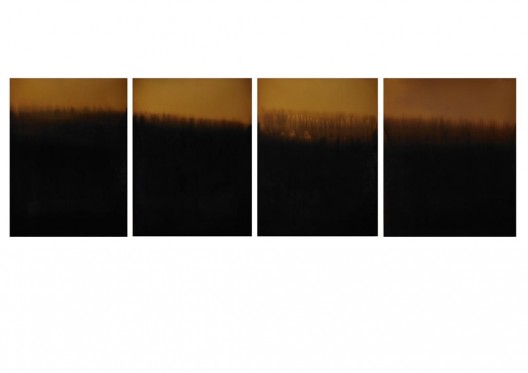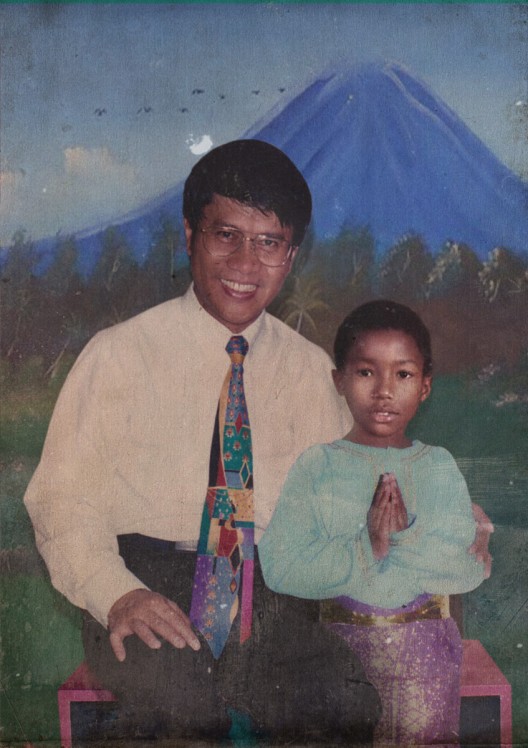“Why are we doing what we are doing?”
Mizuma Gallery (22 Lock Road #01-34, Singapore), September 10—October 30, 2016
Video killed the radio star, so goes the famous Buggles song, only to be likewise slain by the internet, thirty years on. Similarly, Paul Delaroche proclaimed the death of painting at the advent of photography—though it might be more accurate to say that it was freed of the constraints of function. Following this train of thought, the same is in store for photography—if it hasn’t already happened.
“Why are we doing what we are doing?” asks Mizuma gallery’s current photographic exhibition, which could be read as a soupçon of existential doubt concerning the foundations of photography. Instead, as the exhibition’s description puts it, it is a neat framing device for a group show of very diverse photographic practices, and in contrast with the convoluted and generic themes generally deployed in these cases.

Framing the show as a whole is Iswanto Soerjanto’s “Camera Obscura” (2016). Title aside, this is actually an array of twenty cameras obscuras pointed at the jungled environs of Gillman Barracks. This call-back to the original camera, particularly when rendered in cardboard and stabilized by bits of string, suggests on one hand an innocent fascination with photography’s underlying optical principles, and on the other, a sense of nostalgia for a time before the overweening technical sophistication of contemporary cameras. There’s also an insect-like quality to looking through an array of cameras which evokes the rise of virtual reality, for example stereoscopic headsets.
Soerjanto’s chemigrams, however, are for the most part charmless, resembling nothing so much as the experiments of a first-year student, disavowing the lens in favor of direct chemical interaction with silver gelatin paper. An exception can be found in “Evanescence” (2016), which, unlike the other chemigrams, displays a measure of rhythm and delicacy.
Photography’s capacity to deceive, prevaricate and otherwise embroider the truth is very much in play in the exhibition through the works of Agan Harahap and Robert Zhao. Harahap’s “Childhood Memories” series (2015 – 2016), for instance, merges two unlikely subjects: old, commonplace snapshots set in Indonesia, and today’s pop-cultural superstars. Depending on your familiarity with the celebrated faces of popular media, some of these figures might not jump out at you, but they include the likes of Britney Spears, Leonardo Di Caprio, Rihanna, and so on. The childhood faces of these celebrities inserted into Indonesian settings suggest a casual brush with a parallel timeline in which history did unfold thus.
The work of Robert Zhao presented here comes across as a steady accretion of his long running focus on seamlessly merging subtle bio-fictions with apparently conventionally hortatory artworks addressing the degradation of ecosystems and related matters of import. As if a counterpoint to his lush, starkly monochrome photographs, Zhao’s deployment of pastel swatches, vitrines of grapes, eggs, and other objects, and mounted specimens of moldering, barely-there mosquitoes suggests an acerbic, sardonic wit that elevates the installation, sparing it from accusations of po-faced piety.
The aforementioned, more experimentally-oriented works aside, the exhibition has no lack of examples of decisively composed still images. Yamato Masao’s photographs are particularly outstanding in this regard, with each of his images achieving great presence and depth through a startling economy of visual elements—the photographic equivalent of a haiku, perhaps.
Set amongst comparatively unconventional, multi-media photographic artworks, these images possess an additional layer of quiescent wistfulness, particularly with “A Box of Ku + Nakazora” (1992 – 2004) being somewhat yellowed and enclosed in a vitrine. As photography changes in the wake of the unending march of representational technology, perhaps there will come a time when few indeed will ask themselves why they choose to make such images.






